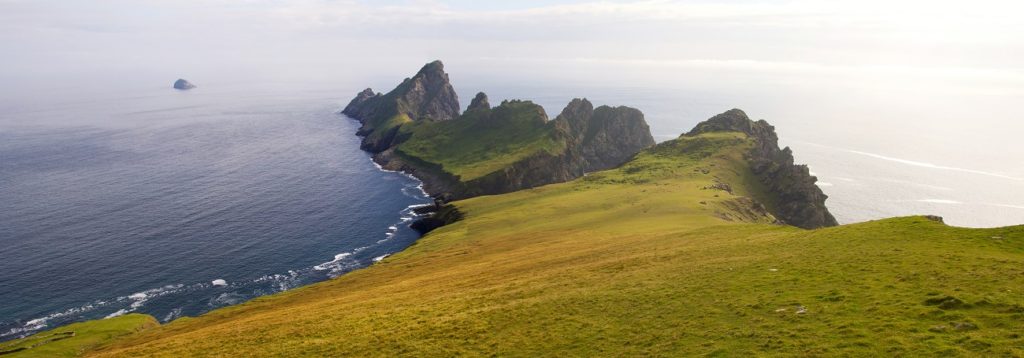The most remote archipelago in the British Isles, St Kilda resonates with images of epic travel, of an exotic island hard to reach but which rewards those who venture there with the experience of a lifetime.
St Kilda comprises five islands plus attendant sea stacks and is positioned 45 nautical miles due west of Leverburgh on Harris. The islands are best known for the hardy community that lived on the main island of Hirta (Hiort) and which was evacuated in highly charged circumstances in 1930.
Soay is the most westerly, hidden for the most part behind the largest, Hirta, on which the islanders made their home on Main Street overlooking the natural harbour of Village Bay. Hirta’s eastern ridges are all but conjoined with Dùn, while the stout lump of Levenish stands alone to the east. To the northeast lie Boreray and the two dramatic sea stacks of Stac Lee (meaning ‘beautiful stack’ in Gaelic) and Stac an Armin (‘stack of the warrior’).

The islands compete to outdo one another with their dramatic beauty: geometric sweeps akin to those of a South Pacific idyll pull the land up from sea level to high cliff ridges where they face the full rigours of the Atlantic Ocean. They include the highest sea cliffs in the British Isles, which at 376m (1,233ft) also dwarf the tallest building in the UK, The Shard in London, and the highest sea stack at 191m (626ft).
The stirring landscape is one of three reasons for the powerful magnetism with which St Kilda draws people from around the world, the others being its deeply moving social history and extraordinary seabird colonies.
The abundance of birdlife is unparalleled in the UK. At the height of the breeding season from May to August, St Kilda is home to a scarcely comprehensible 1 million seabirds, the largest colony in northwest Europe. This includes what was until 2015 the largest gannet colony in the world (now overtaken by Bass Rock in mainland Scotland) and the UK’s largest puffin colony.
For all these reasons, St Kilda is one of only 24 global locations to be awarded ‘mixed’ UNESCO World Heritage Status for its natural and cultural significance. Whether you are interested in one, all or none of these elements, a visit here is unforgettable. For a good number of those who make it here, doing so represents the achievement of a life-long dream.